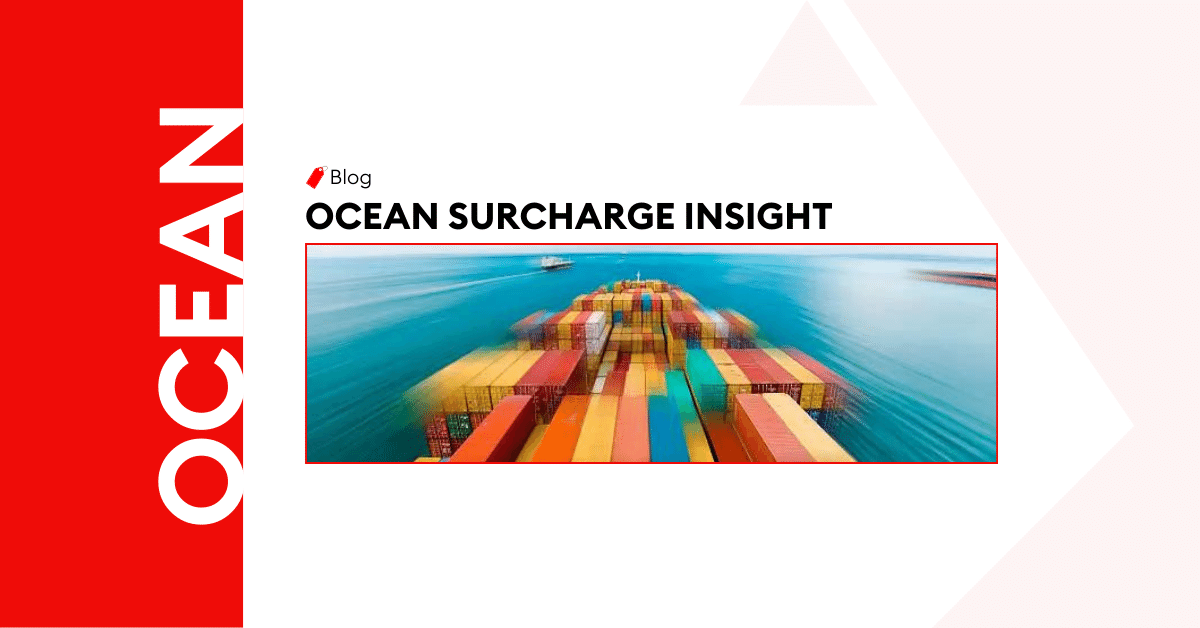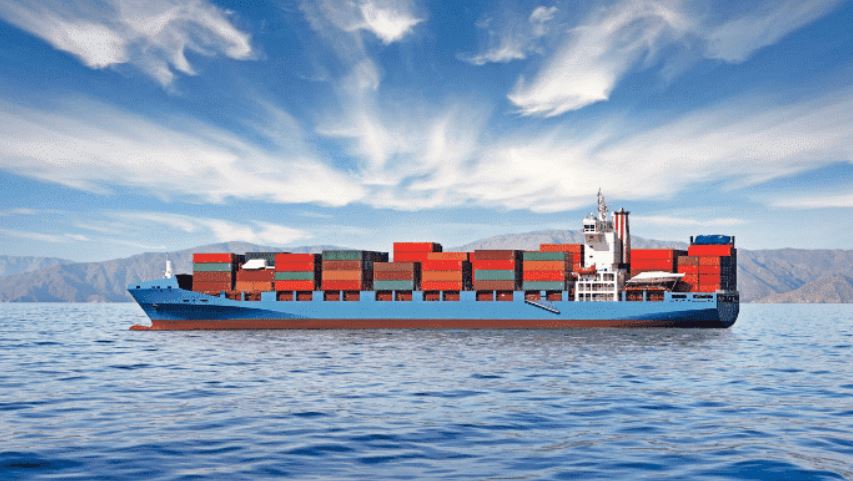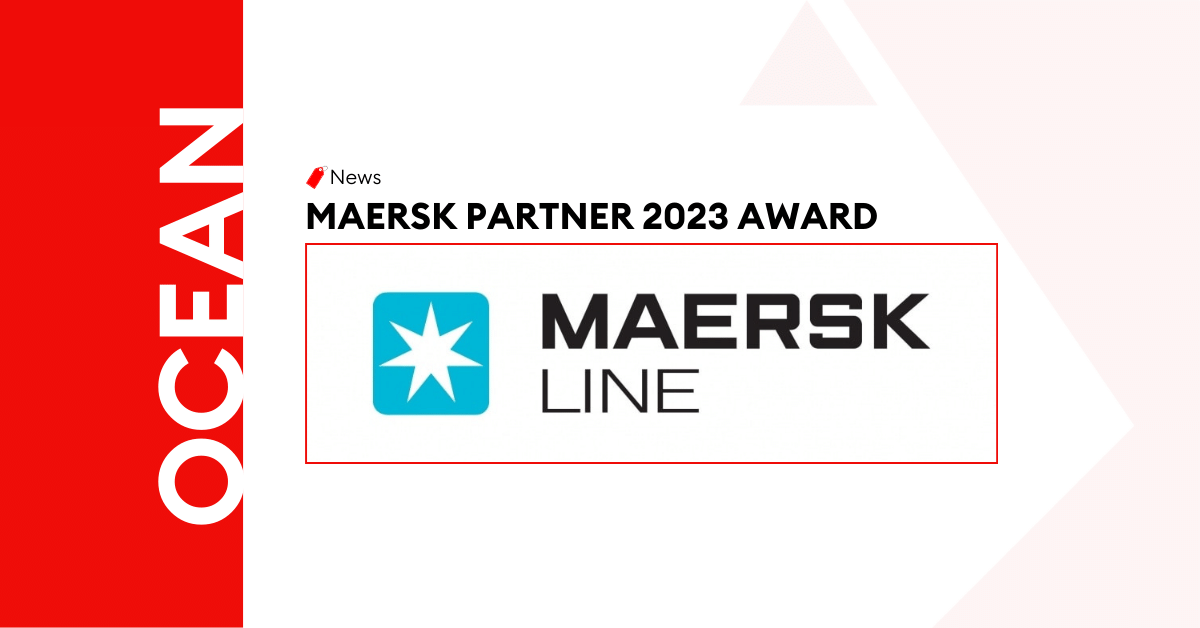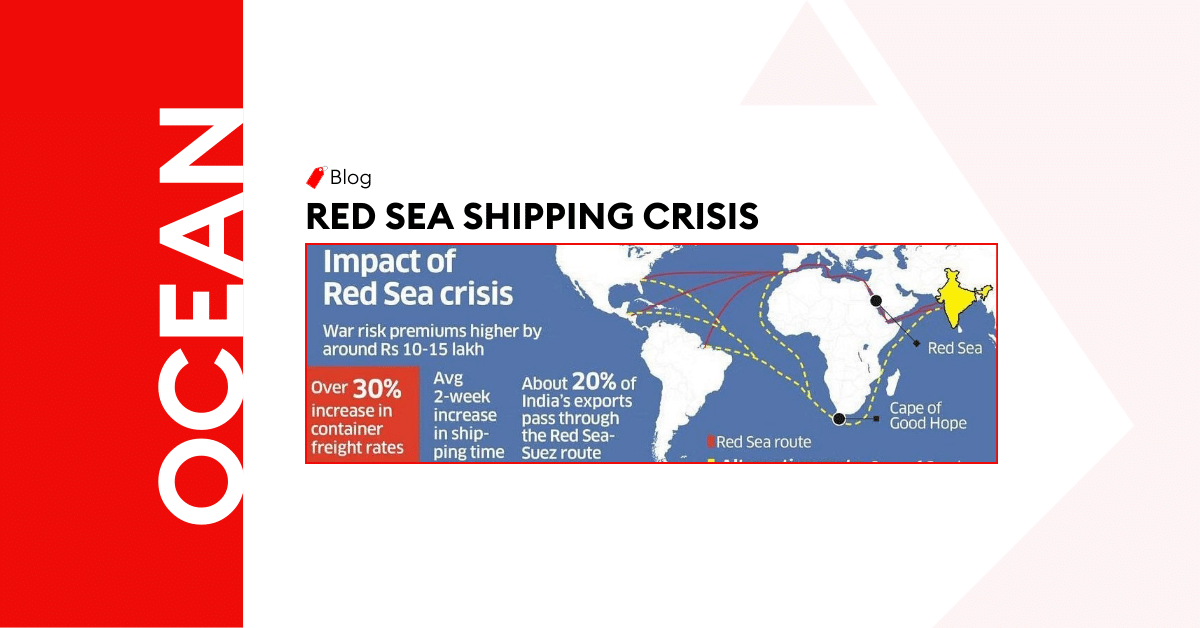
Understanding Shipping Surcharges in Ocean Freight Shipment
The rise of industries and marketing activities has put logistics on its toes. Several goods are being moved from one location to another both locally and internationally every day. This continues the dependence on ocean freight shipment, which is one of the proven and efficient shipping methods. But then issues come up about fees and costs, which brings us to the subject of shipping surcharges. A proper understanding of the cost dynamics around ocean shipment will help you plan toward maximizing profits down the chain.

Have you heard about or had issues with shipping surcharges in the past? Here is an opportunity to have a robust knowledge of what it is, how it works, and proper solutions to minimize costs and maximize profits in the future.
What are Shipping Surcharges?
Shipping surcharges are extra fees paid by cargo owners to the shipping carriers despite having paid the standard shipping fee. This may not happen all the time and depends on the shipping carrier since they impose this fee. It is paid to help shipping carriers cover extra expenses that may arise in the transportation process. Shipping carriers also charge surcharges to cater to risks that may occur or in case the cargo has extra handling needs.
The common types of shipping surcharges are peak season surcharges, fuel surcharges, currency adjustment factors, security surcharges, emergency bunker surcharges, etc.
Types of Shipping Surcharges
There are several types of shipping surcharges, and knowing them gives a better understanding of the reasons for these extra fees.
Peak Season Surcharges (PSS)
Peak seasons are experienced every year. This is a time when there is increased demand for a line of goods or products. It could be the holidays, the Christmas period, the Ramadan season, and other peculiar times of the year that influences increased consumer needs. Shipping carriers charge a surcharge to cater to the increased operations, and capacity constraints to manage the increased volume of the shipment.
A general formula to calculate PSS is
PSS = (Base Rate x Percentage Increase) + Additional Charges
Here’s a breakdown of the components:
- Base Rate: This is the regular or standard rate charged for a particular service or product during non- peak seasons.
- Percentage Increase: This represents the percentage by which the base rate is increased during the peak season. It reflects the additional costs or demand during that period. For example, if the percentage increase is 10%, you would multiply the base rate by 0.10.
- Additional Charges: This component accounts for any extra fees or costs that are specific to the peak season. These charges could include factors such as higher labor costs, increased fuel prices, or other expenses directly related to peak season operations.
“keep in mind this is a general formula and can vary depending on the industry”.
Emergency Bunker Surcharges (EBS)
The ships use bunker fuel and the price of this fuel isn’t stable. So, shipping carriers charge bunker surcharges to cater to the emergency rise of bunker fuel prices. This way, they do not run at a loss.
The calculation of Emergency Bunker Surcharges (EBS) is specific to the shipping industry and is influenced by the fluctuating cost of fuel. Here’s a general formula to calculate EBS:
EBS = (Base Rate x Fuel Factor) + Additional Charges
Let’s break down the components:
- Base Rate: This represents the base or standard rate for the shipping service. It is the rate charged during normal circumstances when fuel costs are stable.
- Fuel Factor: The fuel factor is a multiplier that reflects the fluctuating cost of fuel. It is usually expressed as a percentage or a decimal value. For example, if the fuel factor is 0.20 or 20%, you would multiply the base rate by 0.20.
- Additional Charges: This component includes any supplementary charges that are specific to emergency situations. These charges could account for factors such as increased operational costs due to fuel scarcity, geopolitical unrest, or other unforeseen circumstances.
“Please note that the specific formula and calculations for EBS may vary among shipping companies and can be influenced by industry regulations and market conditions”
Currency Adjustment Factors (CAF)
It’s out of place to rule out the possibility of currency adjustment or fluctuation in cross-border shipping or transport. Currency Adjustment Factors (CAF) are used in international trade to account for fluctuations in currency exchange rates. The formula for calculating CAF typically involves the following components:
CAF = Base Rate x Exchange Rate Differential
Here’s a breakdown of the components:
- Base Rate: This represents the base or standard rate for a specific service or product. It is typically quoted in a particular currency.
- Exchange Rate Differential: This factor reflects the difference between the current exchange rate and a reference exchange rate. It is usually expressed as a percentage or decimal value. The exchange rate differential accounts for the currency fluctuations between the time the rate was set and the current exchange rate.
“It’s important to note that the specific formula and calculation methods for CAF may vary depending on the industry, company policies, and the particular trade agreements in place”
Equipment Imbalance Surcharges (EIS)
The equipment here refers to the shipping container. When there is a shortage of containers, shipping carriers will have to get containers from surplus regions to compensate for the shortage. As a result, they sometimes impose equipment imbalance surcharges. This tends to balance the supply of equipment in different regions.
EIS = Base Rate x Imbalance Factor
Here’s the breakdown of each component:
- Base Rate: The base rate represents the standard charge for using the equipment or container. This r rate is typically determined based on factors such as distance, weight, or volume.
- Identify the Imbalance Factor: The imbalance factor is a multiplier applied to the base rate to account for the equipment shortage or surplus at a particular location. It reflects the difference in supply and demand of equipment. The imbalance factor can be expressed as a percentage or decimal value.
” To obtain accurate and up-to-date information on how EIS is calculated, it is advisable to consult the applicable terms and conditions or contact the relevant shipping company directly”
Port Congestion Surcharges (PCS)
Port Congestion Surcharges (PCS) refers to additional charges imposed by shipping lines or carriers when there is congestion at a specific port or terminal. These surcharges are levied to compensate for the additional costs and delays caused by the congestion. Port congestion can occur due to various factors such as increased cargo volumes, labor strikes, infrastructure limitations, adverse weather conditions, or operational inefficiencies. The purpose of PCS is to mitigate the impact of congestion on shipping operations and cover the additional expenses incurred by the carriers.
PCS = Base Rate x Congestion Factor
Here’s a breakdown of the components:
- Base Rate: This represents the standard rate for a particular shipping service or product. It is the rate charged under normal operating conditions when there is no congestion at the port or terminal.
- Congestion Factor: The congestion factor is a multiplier that reflects the degree of congestion at the port or terminal. It takes into account the additional costs or delays incurred by the shipping line due to congestion. The congestion factor can be expressed as a percentage or decimal value.
” Please note that the specific formula and calculation methods for PCS can vary among shipping companies and may depend on factors such as the duration of congestion, the severity of the congestion, or the type of cargo being handled”
Security Surcharges
This charge or fee covers the implementation of security measures by the shipping carriers. They have to meet up with the security standards set by the authorities.
Security Surcharges = Base Rate x Security Factor
Let’s break down the components:
- Base Rate: This represents the standard rate for a particular service or product when no additional security measures are in place. It reflects the baseline cost without factoring in security-related expenses.
- Security Factor: The security factor is a multiplier that accounts for the increased costs incurred due to enhanced security measures. It considers factors such as additional security personnel, equipment, training, or compliance with security regulations. The security factor can be expressed as a percentage or decimal value.
“ It’s important to note that the specific formula and calculation methods for Security Surcharges may vary among industries, companies, or even specific security requirements. Regulations, industry standards, and market conditions can also impact the calculation”
Documentation Surcharges
Documentation Surcharges are additional fees or charges imposed by companies or organizations to cover the administrative costs associated with handling and processing documentation for a particular service or transaction. The calculation of Documentation Surcharges can vary depending on the industry and the specific requirements involved. Here’s a general formula that can be used as a starting point:
Documentation Surcharges = Base Rate x Documentation Factor
Let’s break down the components:
- Base Rate: This represents the standard rate for a particular service or transaction without factoring in any additional documentation-related costs. It reflects the baseline cost.
- Documentation Factor: The documentation factor is a multiplier that accounts for the additional administrative costs associated with handling and processing the required documentation. This factor considers factors such as document preparation, verification, certification, filing, and other related activities. The documentation factor can be expressed as a percentage or decimal value.
” It’s important to note that the specific formula and calculation methods for Documentation Surcharges can vary among industries, companies, or even specific transaction types”
Piracy Surcharges
This is a risk-related extra fee. It is charged when the shipping route passes through areas of pirate activities. This extra fee is needed to employ extra security personnel and measures in these pirate areas.
Piracy Surcharges = Base Rate x Piracy Risk Factor
Here’s a breakdown of the components:
- Base Rate: This represents the standard rate for a particular shipping service or product under normal circumstances when no additional piracy-related costs are factored in.
- Piracy Risk Factor: The piracy risk factor is a multiplier that accounts for the increased risks and costs associated with operating in high-risk piracy zones. It takes into consideration factors such as insurance costs, security measures, route deviations, or the deployment of armed guards. The piracy risk factor can be expressed as a percentage or decimal value.
” Please note that the specific formula and calculation methods for Piracy Surcharges can vary among shipping companies and may depend on factors such as the specific region or route, the duration of the voyage, or the type of cargo being transported”
Factors Affecting Shipping Surcharges
Factors are triggers that brought about the existence of these extra fees. These factors also determine the rise or fall of surcharges. In all, they have a role to play in the overall cost of shipment. So, let’s dive right into these factors.
Market Conditions and Supply-Demand Dynamics
The market is controlled by the supply and demand dynamics. Wherever the curve tilts, it influences the market conditions. When there is high demand, it calls for an appropriate response of supply. In a bid to meet the high demand via increased supply, it results in an increasing volume of shipments across ports.
The increased shipping activities accrue higher fees as more operational hours and efforts are required. So, shipping carriers will impose a shipping surcharge like the peak season surcharge.
When market activities are normal, it requires less operational cost and likely lead to a lesser surcharge or none at all.
Fluctuation in Fuel Prices
Shipping vessels run on a large amount of fuel. The fuel market itself is a different ball game entirely. With several forces affecting the fuel market, when it rises or falls it affects the shipping industry as well. Past experiences and the volatility of fuel prices have triggered the fuel surcharges, an extra fee to cater to these fluctuations. So, the amount of fuel surcharge depends on the fuel price range in the market and possible forecast of increase.
Currency Exchange Rate Fluctuation
International shipping always considers the currency values and rates of the countries in play. A fee can be agreed upon departure but while in transit for days the currency value increases which results in less money on the ground to sort modalities. Since currency values of trading countries tend to fluctuate by the minute, it triggers the need for a surcharge. A currency fluctuation surcharge is charged to compensate for any change in currency value and the amount will depend on the rate of currency change.
Equipment Availability and Imbalance
There are cases of shortages of equipment like shipping containers. This could be due to excess cargo shipments. Shipping carriers will have to take action to make equipment available, which will involve taking from other regions or ports to create a balance. This is an intensive operation that attracts cost. As a result, they impose a surcharge for equipment imbalance to offset the operational cost of balancing equipment.
Port Congestions and Infrastructure Issues
The shipping industry at times experiences port congestion. This can be due to excessive demand, needing the transport of a high volume of cargo by different businesses. Another cause can be a delay in shipment due to weather conditions, piracy attacks on shipping routes, wars, and border restrictions.
When there is congestion or infrastructure problems, a quick response must be made to keep cargo moving. Extra operations and effort are required to handle the high volume of cargo. As a result, port congestion surcharges are imposed.
Security Regulations and Compliance Requirements
The shipping industry holds the security of cargo and personnel of utmost importance. As a result, there are standards set for security. Shipping carriers have no option but to comply with the security standards. So, they apply several security measures for both cargo and personnel which attracts cost. The shipping carrier then charges a security surcharge to offset this cost.
The more intense the security conditions become, the higher the surcharge fee may become.
Transparency and Communication of Surcharges by Shipping Lines or Carriers
urcharges can be tricky especially when dealing with dishonest shipping lines that want to take advantage of the situation. This is why emphasis is laid on the fact that terms, methods, and reasons for surcharges be clearly communicated.
As a business, always ask your shipping lines or freight forwarders for a clear breakdown of its surcharge calculations. If they do not oblige, then they may not be an ideal shipping carrier for your cargo.
Examples Illustrating How Surcharges Impact the Total Freight Cost
Let’s make it a bit practical. You have a cargo ready for shipment and the base freight rate is $4000. Then the shipping carrier says it’s peak season and there will be a surcharge of 25%. This means 25% of the base rate of $4000 amounting to a $1000 peak season surcharge fee. Adding the base rate and surcharge gives $5000 which is the total freight cost.
Another illustration could be for a fuel surcharge of 15% on a base rate of $2000. This results in an extra $300 as a surcharge and the total freight cost is $2300.
How Al Sharqi Can Help
It’s almost impossible to eliminate shipping surcharges as they are needed in their respective cases. However, we can help you get the best deals. Al Sharqi Shipping & Logistics can be your ideal logistics partner and freight forwarder that will move your cargo via transparent and honest shipping carriers.
We ensure that you are in sync, and well-informed on every cost that is charged. The best part is we will connect your cargo to shipping carriers with reasonable surcharges.
Contact Al Sharqi to get started!!
Conclusion
Shipping surcharges are almost beyond control. These extra fees depend on the prevailing situations and the integrity of the shipping line. Factors responsible for a surcharge include port congestion, fuel price fluctuations, security measures, peak seasons, etc. There are ways and determiners of the surcharge rate as explained in this post.
Frequently Asked Questions
Shipping surcharges are calculated from the base rate. They are either expressed as a percentage of the base rate or a fixed amount with reference to the base rate.
Different carriers offer different services, like a carrier may offer special handling different from another carrier. Other reasons include different transport networks and geographic coverage.
You can consolidate your shipment to reduce shipping frequency. Use an open-minded shipping carrier that will listen to negotiations. Employ the help of logistics partners like Al Sharqi who can provide better solutions.
It’s pretty difficult to predict surcharge fluctuations. However, you can stay informed by following up on news about shipping and logistics space. Read up on market statistics and information as forces of demand and supply trigger surcharges. Inquire from logistics experts like Al Sharqi.
Our customer service team is happy to assist you with planing your next booking.

Related Articles
Al Sharqi Shipping and Logistics Wins Maersk Most Valuable Partner 2023 Award
Dubai, UAE – May 24, 2024 – Al Sharqi Shipping is proud to announce that it has been awarded the
Sustainability Milestone: Al Sharqi Shipping Receives 2023 Maersk ECO Delivery Certificate158
Al Sharqi named as the Maersk Line UAE Most Valuable Partner 2022 Dubai, UAE – Al Sharqi Shipping
Strategic Shifts in Maritime Trade: Responding to the Red Sea Shipping Crisis
The Red Sea, a critical maritime artery connecting Europe, Asia and North America but recently it ha







Post a comment
You must be logged in to post a comment.